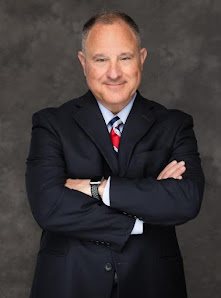More Content Now
January 4, 2021
As Americans have come to accept more than 2,500 deaths a day as a result of COVID-19 - it is no wonder that little attention is being paid to the dramatic increase in homicides nationwide.
From the east coast to the west the numbers are
astounding. As December drew to a close, New York City’s 447 homicides made
2020 the city’s bloodiest year in nearly a decade, according to The New York
Times.
The Chicago Tribune reported that through the last
week of 2020, Chicago had recorded 762 homicides, a 55% jump over the same
period in 2019. It is one of the largest annual increases in recent city
history.
Across the city of Houston, 400 people were murdered
as of Dec. 29. That’s a spike of at least 42% over 2019, according to KTRK-TV
13 the ABC affiliate in Houston.
In Los Angeles, 2020 saw killings rise sharply. As
of mid-December homicides had risen by 30.4%, their highest level in a decade.
According to the Los Angeles Times, in one week this summer, from June 29 to
July 5, 29 people were murdered in Los Angeles County.
There are several suggested reasons for increasing
violence in big cities - the mounting tension associated with the pandemic, a
tumultuous presidential election and the nationwide protests associated with
police treatment of blacks.
However, the increase in homicides is not just a big
city problem.
According to the Washington Post, FBI data indicates
that small cities with fewer than 10,000 residents saw more than a 30% increase
in killings in the first nine months of the year.
The nation as a whole has experienced the largest
single one-year increase in homicides since the country started keeping
records.
Murder is probably the best indicator of crime.
Unlike robbery or aggravated assault, homicide cannot be manipulated or
negotiated to look like a different offense. Police can charge an individual
with felony assault and then plead the charge down to disorderly conduct or a
charge of robbery, a felony, can be reduced to a misdemeanor theft.
Murder is murder - investigators cannot ignore a
dead body.
Why is murder on the rise? Some suggest that the
confluence of the pandemic and social unrest have left police departments
depleted.
Some will argue that as police officers became
infected with COVID-19 there were fewer officers on the street. As the public
became infected there were fewer witnesses. Some will argue as protests
increased more officers were assigned to manage the unrest instead of
investigating and fighting crime. Disputes were being settled in the streets.
Have police officers pulled back on their influence
with regard to community safety as a result of movements like Black Lives
Matter and “Defund the Police?”
The New York Times looked at preliminary reports of
violent crime mid-year and found that while murder was soaring, violent crime
was generally down. The Times asked, “How often do murder and other types of
violent crime move in opposite directions?”
Only four times since 1960. Over the last 30 years
the difference nationally between murder and violent crime has been just 2.2%,
so a “big increase in murder nationally while violent crime falls is almost
unheard of.”
This anomaly points to either underreporting or
under-investigating. Another key indicator of police pull back are clearance
rates - the number of cases solved by police departments. For instance, in
Minneapolis where George Floyd was killed by police, the clearance rate has
dropped to about 41% this year - four in ten murders were solved in
Minneapolis. New York City’s clearance rate has fallen as has Houston’s, after
three years of improvement.
Policymakers will not have a clear picture of the
role of policing in the increase in homicides until after the FBI’s Uniform
Crime Report and the Department of Justice’s National Crime Victimization
Survey are released later this year.
However, the preliminary numbers are a harbinger of
difficult times for communities across the country.
Matthew T. Mangino is of counsel with Luxenberg,
Garbett, Kelly & George P.C. His book “The Executioner’s Toll, 2010” was
released by McFarland Publishing. You can reach him at www.mattmangino.com and
follow him on Twitter at @MatthewTMangino.
To visit the column CLICK HERE








No comments:
Post a Comment